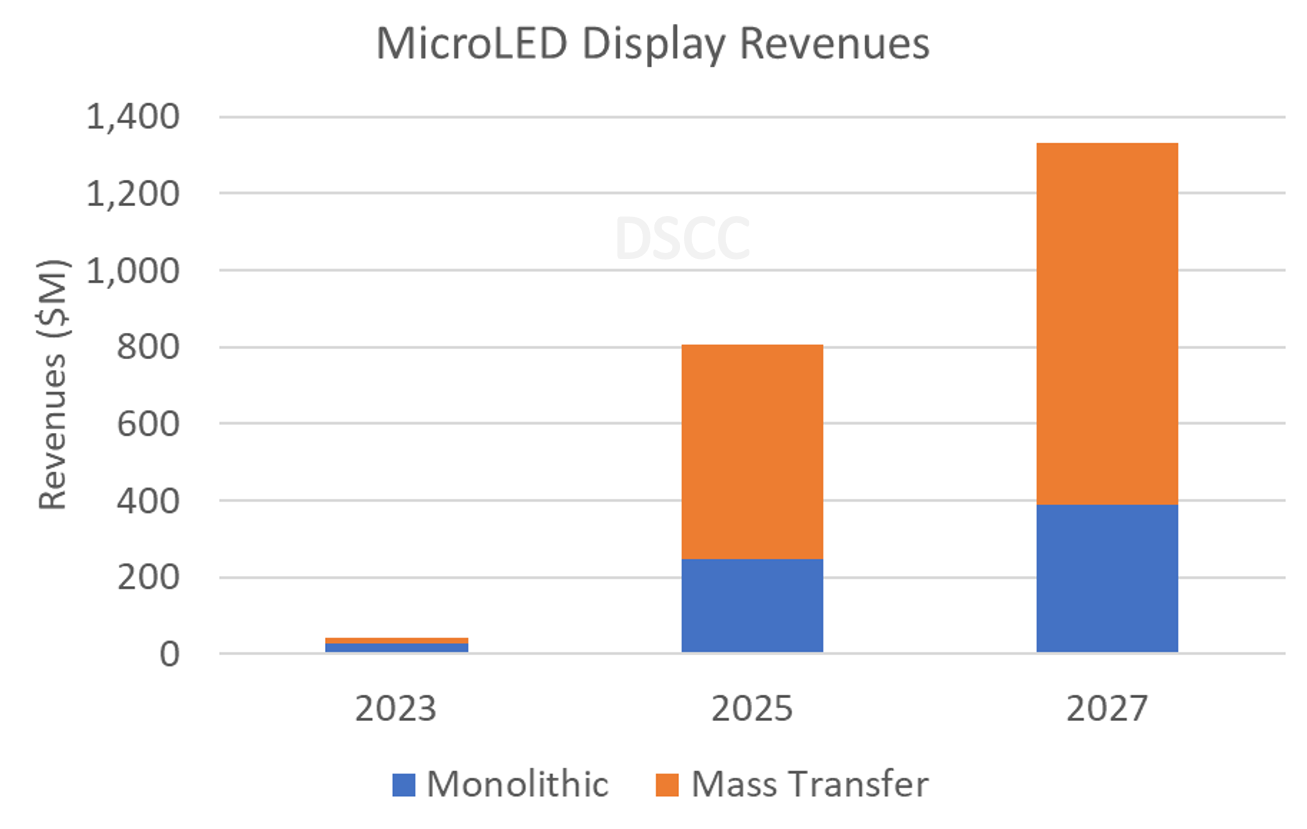
Display Industry MicroLED Buzz Calming From Roar To Hum: DSCC Report
November 8, 2022 by Dave Haynes
The industry buzz about microLED as a digital signage display technology has calmed from a roar to more of a hum, according to a new report from the market research and analysis firm Display Supply Chain Consulting.
“MicroLED was initially presented as an ideal display technology for all applications but the hype has faded,” suggests Guillaume Chansin, Director of Display Research at DSCC. “OLED has conquered the smartphone market and keeps getting better, while LCD still offers unbeatable value for money. MicroLED is currently only available as an oversized TV or a miniature projector for smart glasses.”
The market for MicroLED displays is still tiny, says DSCC, but could grow to $1.3B by 2027, according to DSCC’s new MicroLED Display Technology and Market Outlook Report. Manufacturing costs, and by extension, reseller and end-user prices, have to come down more before MicroLED can become competitive against other technologies, such as OLED, suggests DSCC.
The pitch with MicroLED displays is that the tiny – sub 100 microns – LEDs can be packed at high density rates to produce high efficiency, high brightness, long-lasting displays that rival more established technologies like LCD and OLED for clarity. DSCC makes the point in the report that some of the companies in the marketplace are promoting new LED video wall products as MicroLED displays, when “the chip-on-board (COB) method used by these displays is closer to the MiniLED technology found in some LCD backlights.”
DSCC report summary continues:
MicroLED displays can be manufactured by mass transfer of a large number of individual LED chips onto a display substrate. This requires specialized tools with high accuracy and high throughput. Although there have been several demos of MicroLED displays made by mass transfer, the only product on the market is Samsung’s MicroLED TV.
At CES 2022, Samsung announced a new lineup of MicroLED TVs. However, the launch has been delayed, most likely because of the low production yield. According to the DSCC report, the price of MicroLED TVs is expected to remain too high to get a significant market share in TV in the next five years. This year, Samsung has also launched QD-OLED as a premium TV display technology.
Apple has been working on MicroLED technology since acquiring LuxVue, a startup developing a mass transfer technique, back in 2014. However, Apple does not appear to be in any rush to introduce MicroLED into its products. Apple is increasingly relying on LTPO OLED for high end mobile devices, including the $799 Apple Watch Ultra. LTPO is a backplane technology that reduces power consumption at low refresh rates, such as with always-on displays.
The small size and low pixel count of smart watches is an advantage for MicroLED mass transfer. DSCC expects that Wearables will ultimately become the largest segment for MicroLED displays.
There is not much debate about the premium video wall products marketed as MicroLED by the big display manufacturers look stunning, but there are a lot of commercial AV applications – like feature walls in lobbies and big retail – that also look great with less costly fine pitch LEDs. However, there are counter-arguments that as manufacturing techniques improve and efficiencies are found, production costs will lower. There’s also lots of thinking that MicroLED is the technology that can really enable embedding display technology into different surfaces like glass.



Leave a comment